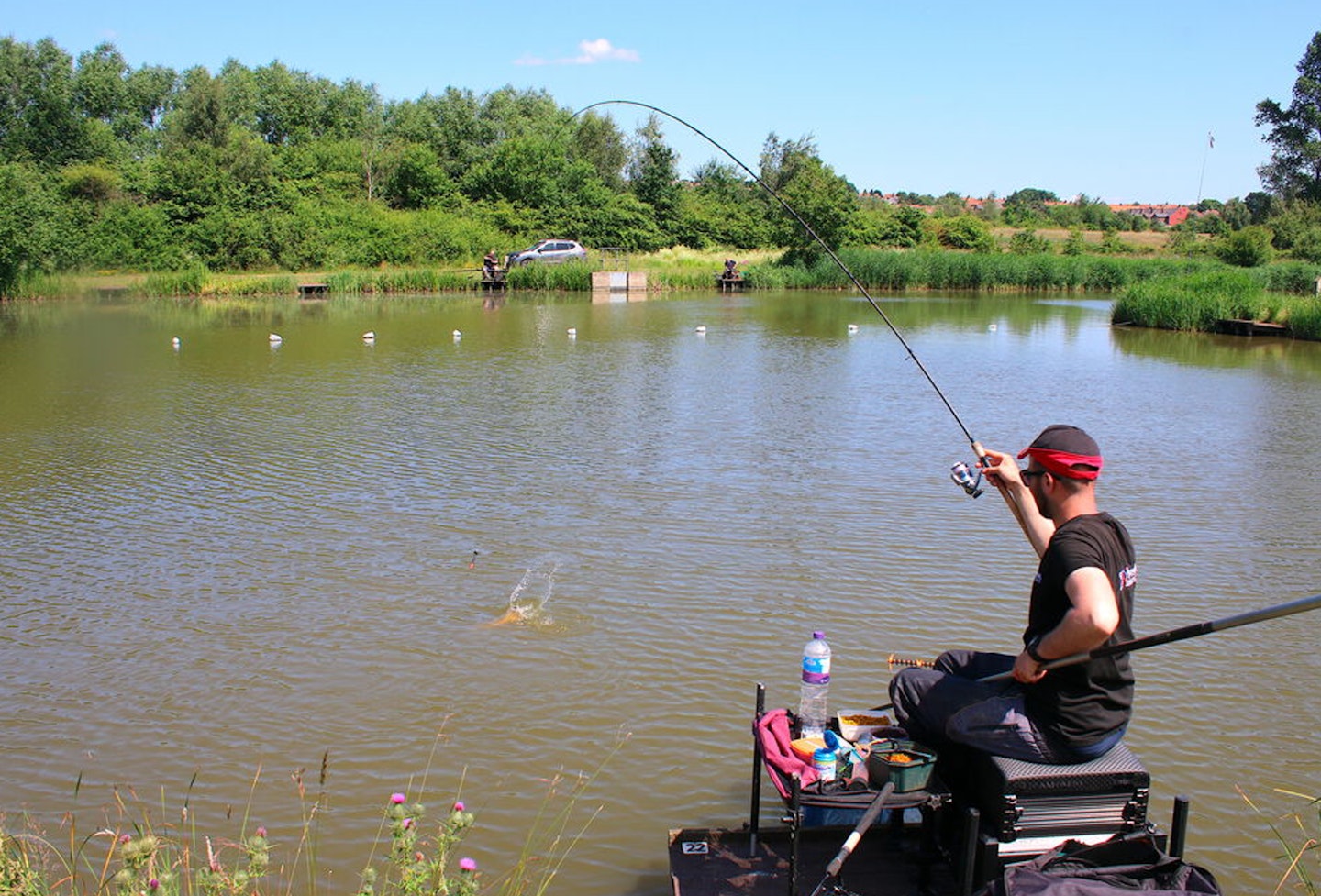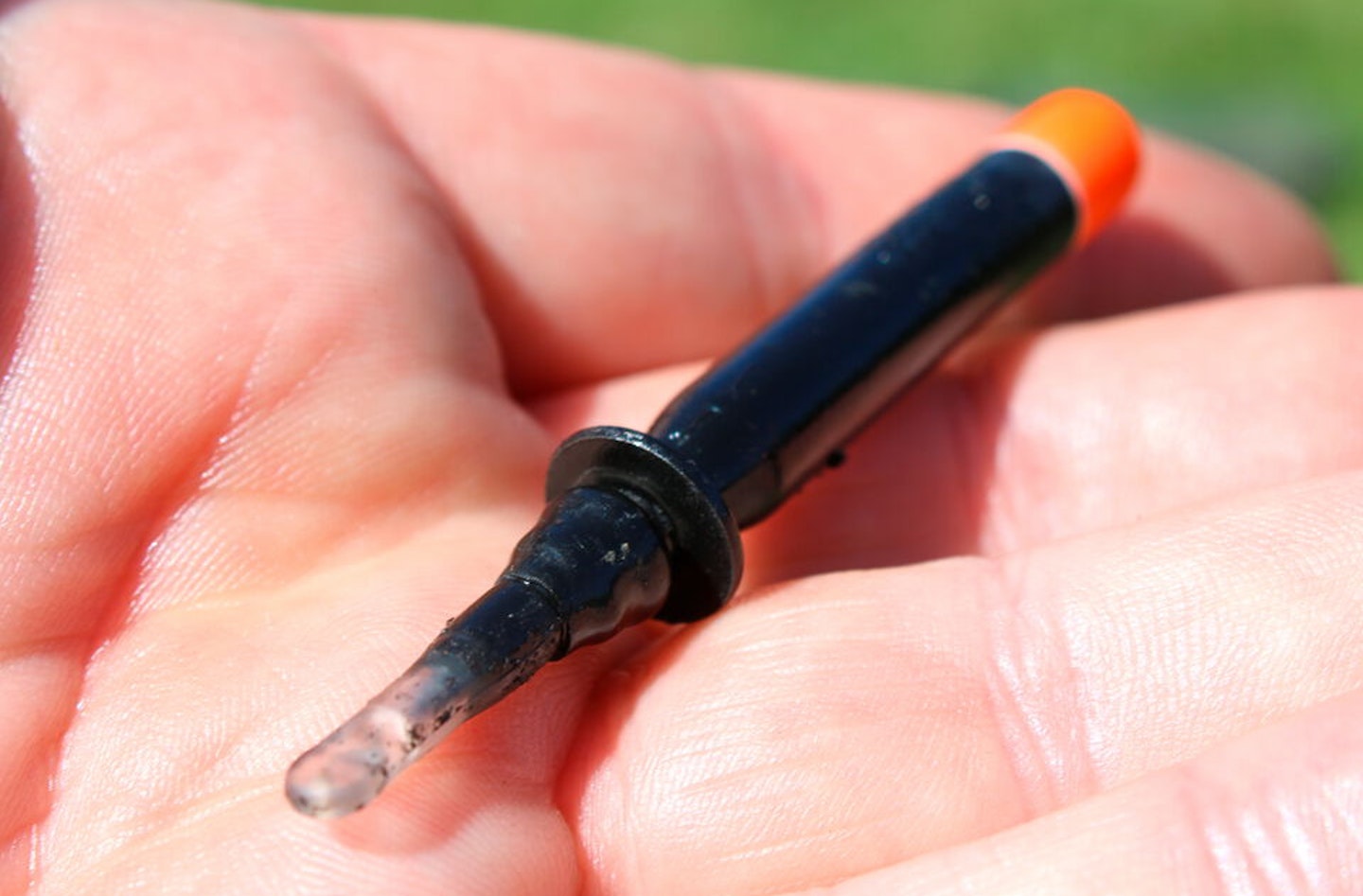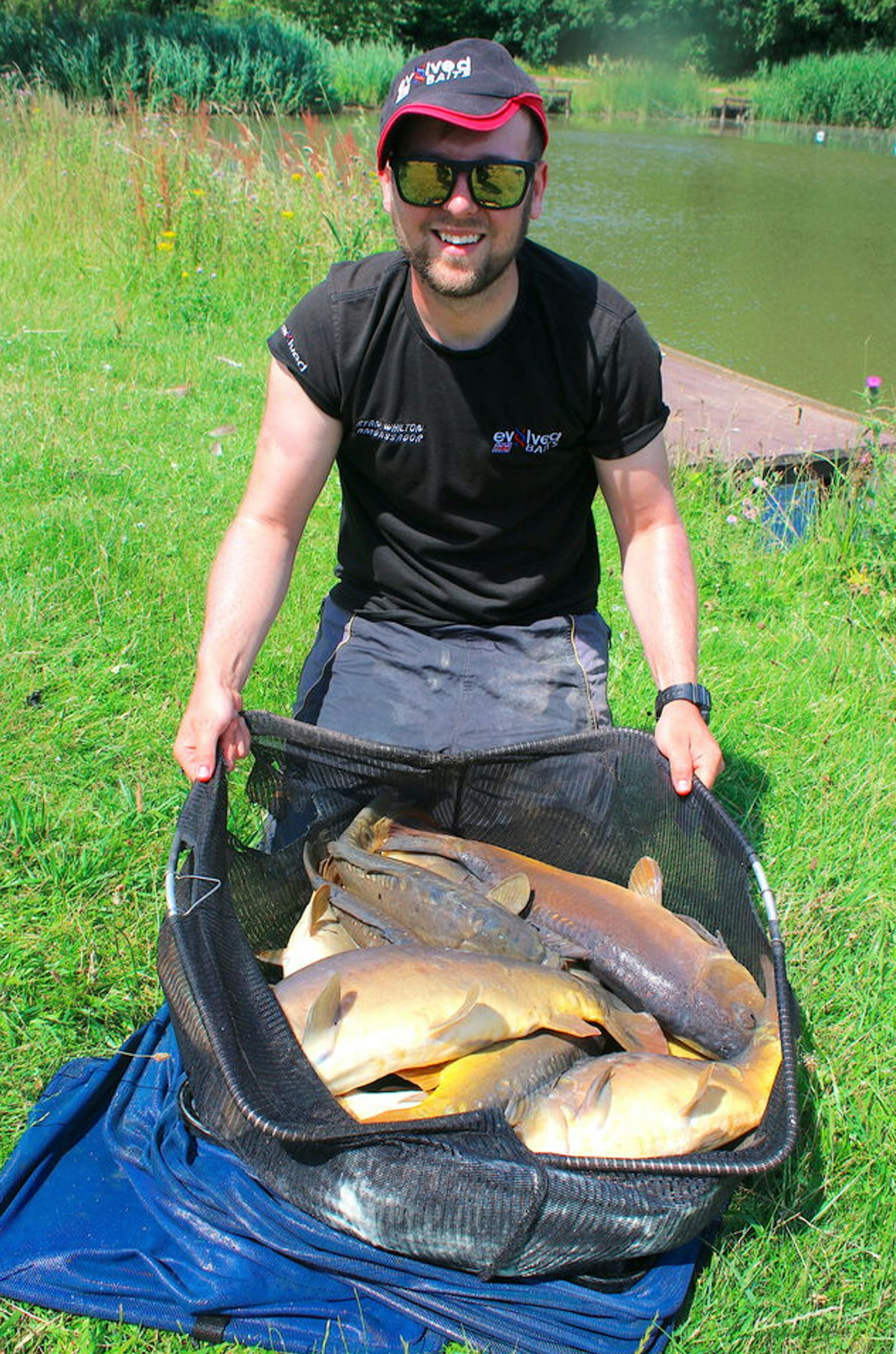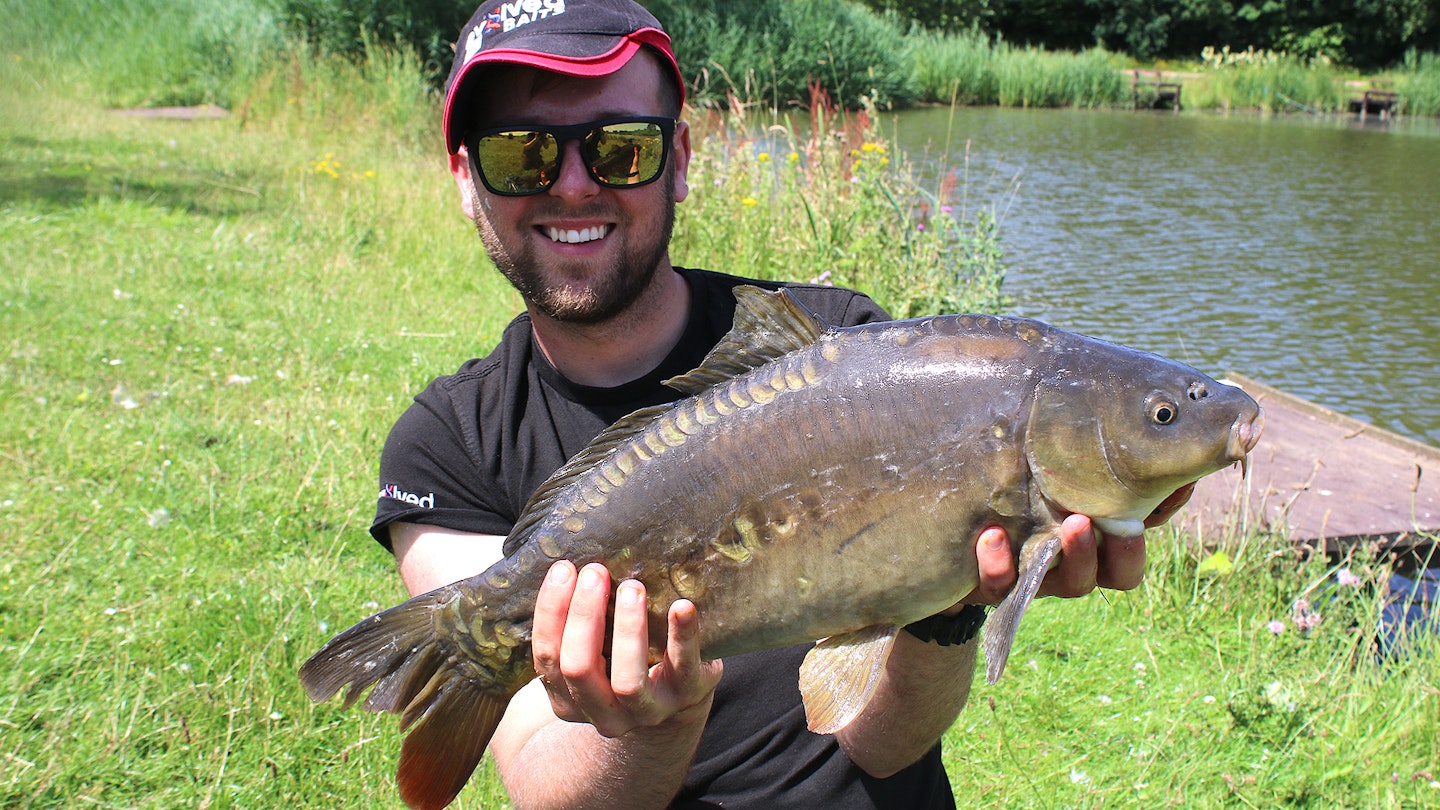On the face of it, fishing the pellet waggler is a relatively simple process to get right.
Feed, cast, wind in and repeat the sequence until the float buries and you’re in! However, it doesn’t always work out that way, and often carp will shy away from the feed and the splash of the float landing.
They may still be interested in feeding, but won’t be ‘in the feed’ – instead they’ll sulk a few yards away.
In this situation, lots of anglers would throw the waggler rod up the bank and pick up something more likely to catch, but that’s wrong. You can still catch on the float, although a very different strategy is required, one that almost starves the fish into taking the bait.
The answer is to feed without having the float in the water. Once I think some fish are about, I’ll cast without feeding. With no loosefeed to raise the alarm, the carp will see the hookbait falling and take it.

As an example, I may fire out two lots of a dozen 8mm pellets in quick succession and then wait a few minutes before casting over the top. It’s amazing how often it works.
Casting about is also a good trick to try. Rather than landing the float where the feed’s been going in, I like to go to where the fish may be. If they’re a few yards off the feed, a chuck slightly to the left or right can land on top of them and get an instant bite. It’s all about searching the swim as opposed to building up one main area and trying to get the carp there.
I’ll change depth regularly too. Because the fish may back away from the float, a longer hooklength gives me more chance of having the bait fall in front of them.
It’s not unusual for me to fish a 4ft hooklength – I won’t actually catch at that depth because most bites will come within seconds of the float landing. What’s happening is that the bait is closer to the fish that have backed off than if I were fishing with a 2ft hooklength.
I’m also a big fan of using as light a float as I can get away with. This makes for much better presentation of the bait, but it can be hard to cast a small waggler taking just a couple of SSGs the required distance. By using a thin and light reel line it’s much easier – and what I have on my reel may surprise a few people.

It’s 0.16mm Colmic F1 Spider line, which is designed for pole rigs. Its low diameter makes casting small floats easy, but on its own, it’s too light. Having a shockleader built into the set-up gives me a safety net when big carp are hooked.
This involves using 1m of 8lb Daiwa Sensor line that the hooklength is attached to and the float sits on. It doesn’t impede casting and helps absorb the strain when a fish is hooked.
It also means that at netting time, I’m playing the fish on this as well as the mainline. Believe me, it really does work!

